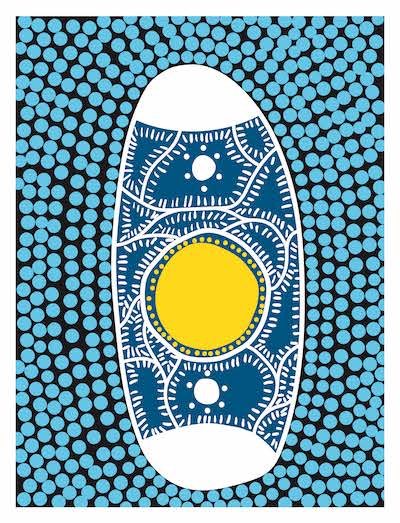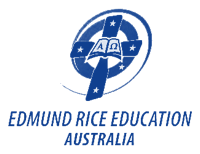
Director of Learning, Elizabeth Watson, centre.
From the Director of Learning, Elizabeth Watson
NSW Government changes to the HSC
The HSC is one of the most constant things in education in NSW. While approaches to learning, testing, technology and university admissions evolve and change from year-to-year, there has always been certainty about the HSC. The last time questions were asked about how the HSC operates was at the start of the 1990s.
Mid last year the Minister for Education in NSW announced a range of new policies that will impact on schooling in the years to come. These were wide ranging. They restructured the state’s educational authorities and will influence how students approach their HSC studies.
Much has been made of these in both mainstream and social media since the announcements, with most of the focus of discussion on the new literacy and numeracy standards. While this is an important part of the reform, there is much more that will influence how HSC studies are delivered in the years to come.
Minimum Literacy and Numeracy Standards for the HSC
In many eyes this is probably the most controversial (and hence publicised) of the HSC reforms, and much has been made of it in the media. From 2020, all Year 12 students in NSW must reach the minimum standard of literacy and numeracy to receive a HSC.
The minimum standard is defined by the Australian Core Skills Framework (ACSF) which describes the nationally acceptable levels of reading, comprehension, writing and calculation that school leavers need for the workforce or to attempt further study. The standard that the NSW Education Standards Authority-NESA (which replaces BOSTES) has set is ACSF Level 3. This is the level that both State and Federal governments consider to be the minimum level of literacy and numeracy of a graduate of 12 years of schooling.
How will it work and what does it mean for our students?
From 2020, all Year 12 students in NSW must reach the minimum standard of literacy and numeracy to receive an HSC.
Students in Year 9 in 2017 will be the first students expected to meet the standard.
It is important to understand that a student’s results in NAPLAN do not determine whether or not they are eligible to enrol in the HSC.
Students who achieve a Band 8 or beyond in their Year 9 NAPLAN tests are considered to have met the required level well before they reach Year 12 and they will be exempt from any further literacy and numeracy tests.
Students who achieve below Band 8 in their Year 9 NAPLAN tests will have multiple opportunities to demonstrate their skills in Year 10, 11 or 12 in online tests from NESA. They can attempt the tests multiple times before they sit the HSC examinations, until they can demonstrate that they have reached the ACSF standard.
The College will track NAPLAN results as the boys move through Year 7 and into Year 9. There will be boys who may need identified support to build their skills, and we will be able to build targeted programs that run alongside their studies so they can meet the standards that will be required of them.
Additionally, students will have up to five years after leaving school to retake the NESA literacy and numeracy test to demonstrate their skills. Those students will still complete HSC examinations, and be issued results in each subject alongside their peers, but will not receive the Higher School Certificate as a credential and hence not be eligible to receive an ATAR. They will receive a Record of School Achievement (ROSA) that will list their results, but it will not be upgraded to the HSC until they successfully complete the literacy numeracy tests.
Changes to the HSC courses
One of the most positive outcomes will be the review of the current syllabuses for all HSC subjects, and the introduction of new courses for HSC students.
From this year we will see regular updates to the structure, content and the skills in each HSC course to ensure that they are best meeting the needs of our coming cohorts of students. This will involve bringing them up-to-date with contemporary thinking in each discipline, and aligning what students learn with the demands of both universities and industry. We will see the first of those implemented for the boys entering Year 11 in 2018 in a selection of subjects.
Additionally, we will begin to see new courses offered to NSW students. The first cab off the rank will be an Extension Science program, available to students sitting the HSC in 2019. There are also discussions and consultations underway around a range of new disciplines, and we look forward to these developments to potentially broaden the choices our students will have.
Changes to HSC assessment
Families who have had boys complete Year 12 will be familiar with the program of internal assessment that boys complete in their final years – between four and six tasks in each subject they are studying in both Year 11 and 12.
The changes for Year 11 students in 2018 reduce the burden of assessment on students. Year 11 students will complete a maximum of three tasks in each subject, while Year 12 students will complete a maximum of four tasks (which includes their Trial HSC Examinations).
We welcome this move. Under the current requirements an average Year 11 student completes 28 assessments through to the end of Term 3, averaging a little under one a week. The assessment load is higher for a Year 12 student, but is spread over four terms. Boys that have been through Year 12 often speak of lurching from one assessment to the next, not really having extended periods of time when they focus on building their understanding of a subject’s content. We are confident that allowing students and teachers to focus on the business of learning, rather than testing, will build a more comprehensive mastery in each subject by students.
We will also see changes to the style and structures of the questions used in HSC examinations to allow markers to assess students’ understanding of concepts and content, as opposed to their ability to memorise them. We have already seen unpredictable approaches being used in recent HSC examinations to prevent students from relying on pre-prepared practice essays based on previous years’ examination questions and we can expect this to become more prevalent in the coming years.
We will be working through the detail of all of these initiatives as NESA releases them to us over the course of this year, so that we are best preparing the HSC boys for their passage into and through their senior years.
If you are interested in looking into the changes in more detail, NESA has released some fact sheets about these reforms and a Parent Guide
- The new literacy and numeracy standards for the HSC
https://www.boardofstudies.nsw.edu.au/policy-research/stronger-hsc-standards/minimum-standard.html
- The sample literacy and numeracy test
https://hscliteracynumeracy.bostes.nsw.edu.au
- Changes to HSC Syllabus Documents
- Changes to HSC Assessments from 2018
- NESA Parent Guide
https://educationstandards.nsw.edu.au/wps/portal/nesa/parent-guide
- Minimum Literacy and Numeracy Standard FAQ sheet



